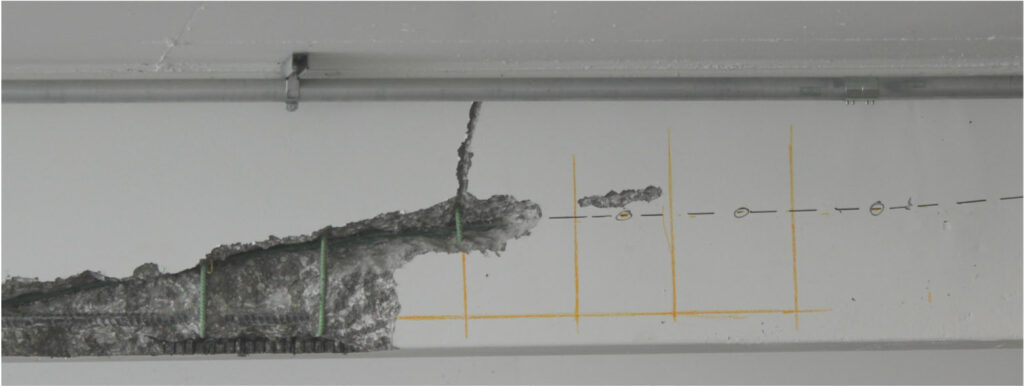RainierGPR Concrete Scanning: Accuracy and Security for Construction Tasks
Wiki Article
Exploring the Trick Advantages of Concrete Scanning in Building Projects
In the world of contemporary construction practices, the application of concrete scanning technology has emerged as a crucial device for ensuring job performance and architectural honesty. From boosting safety measures to accurately spotting utilities hidden beneath the surface, the advantages of concrete scanning are complex. The capability to streamline project timelines and decrease prices while protecting existing frameworks is a testament to the value this technology offers the construction industry. As we dive into the nuanced advantages of concrete scanning, it comes to be noticeable that its impact extends far past surface-level analyses, providing a glimpse right into the elaborate web of advantages waiting to be discovered.Boosted Safety And Security Actions
Utilizing sophisticated concrete scanning technology boosts precaution on building and construction websites by giving exact detection of prospective risks hidden beneath the surface area. This modern technology allows construction teams to identify rebar, conduits, post-tension cables, and other obstructions prior to excavation or drilling, dramatically reducing the danger of crashes. By identifying these components specifically, employees can avoid damaging critical architectural elements, therefore preventing injuries, hold-ups, and costly repair services.
In addition, concrete scanning plays an important duty in ensuring the stability of existing structures during developments or remodellings. By discovering weak points, gaps, or deterioration within concrete aspects, engineers can address these problems proactively, enhancing the total safety and security and long life of the building. This aggressive strategy not just mitigates the risk of architectural failures but likewise decreases the possibility for crashes brought on by unanticipated architectural deficiencies.
In significance, the implementation of concrete scanning technology acts as a proactive security procedure that safeguards both building and construction employees and the architectural integrity of structures, eventually adding to the overall success and efficiency of building tasks. - RainierGPR Concrete Scanning
Accurate Detection of Utilities
Concrete scanning innovation helps with precise recognition of below ground utilities, boosting building site security and efficiency. Precise discovery of utilities is essential in building tasks to protect against expensive damages, job delays, and most notably, make sure the safety and security of workers and the public. By using sophisticated scanning technologies such as ground-penetrating radar (GPR) and electro-magnetic induction, building groups can draw up the location of hidden pipelines, wires, and various other utilities with high degrees of precision.

click here for info
Time and Expense Effectiveness

Concrete scanning technology enables building and construction groups to precisely find rebar, post-tension cables, and various other embedded items within concrete frameworks. This specific info aids in preventing expensive mistakes such as accidental damages to crucial elements during boring, cutting, or coring activities. Furthermore, by recognizing prospective risks ahead of time, the demand for costly repair work or revamp as a result of damages can be minimized, resulting in cost financial savings for the job.
Moreover, the capability to swiftly and properly find energies below the surface without causing any damage not just saves time yet also protects against expensive disruptions to existing facilities. Overall, the moment and expense performance benefits of concrete scanning make it a vital device for enhancing construction project administration and execution.
Preservation of Structural Stability
Preserving the structural honesty of buildings and infrastructure is extremely important in ensuring lasting security and safety and security. Concrete scanning plays an important function in this conservation process by enabling building professionals to determine possible dangers to the structural honesty of a structure or framework before they image source intensify into major concerns. Via using sophisticated scanning innovations such as ground-penetrating radar (GPR) and electro-magnetic induction, building teams can non-invasively examine the problem of concrete frameworks, situate rebar, post-tension wires, and various other embedded elements, and identify any type of gaps, cracks, or wear and tear within the concrete.Improved Task Preparation
In order to guarantee the successful implementation of construction projects, precise focus to information and thorough preparation are necessary elements that stem from an extensive understanding of the architectural conditions determined through concrete scanning. Inevitably, including concrete scanning into the job preparation phase boosts coordination among group members, cultivates aggressive analytical, and contributes to the effective shipment of construction tasks within budget and schedule constraints.Final Thought
To conclude, concrete scanning provides many go to the website benefits in building jobs. By boosting precaution, precisely detecting energies, improving time and cost performance, maintaining architectural stability, and helping in task planning, concrete scanning shows to be an essential device for effective task implementation. Its capacity to alleviate dangers, increase performance, and guarantee job integrity makes it a crucial possession for building professionals.
In the realm of modern-day building techniques, the application of concrete scanning modern technology has emerged as an essential tool for guaranteeing job efficiency and structural stability.Concrete scanning modern technology allows construction groups to properly find rebar, post-tension cables, and various other ingrained objects within concrete structures. With the use of sophisticated scanning modern technologies such as ground-penetrating radar (GPR) and electro-magnetic induction, construction groups can non-invasively examine the problem of concrete frameworks, locate rebar, post-tension wires, and other ingrained aspects, and determine any voids, splits, or wear and tear within the concrete.
In order to guarantee the effective execution of building and construction jobs, meticulous attention to detail and thorough planning are important parts that stem from an extensive understanding of the architectural problems recognized through concrete scanning. Inevitably, including concrete scanning right into the job planning stage boosts control among group participants, cultivates aggressive analytic, and adds to the effective shipment of building and construction projects within budget and timetable constraints.
Report this wiki page